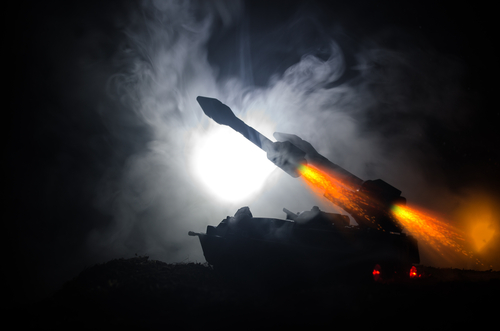The Pentagon has confirmed that Iran is providing Russia with close-range ballistic missiles, which could be used against Ukraine in the coming weeks. These missiles, known as the Fath 360, have a range of approximately 75 miles and will allow Russia to conserve its more valuable long-range missile stocks. The transfer is part of a broader military partnership between the two nations, which includes the exchange of drones and nuclear technology information. This development raises serious concerns about the ongoing conflict in Ukraine.
Since Russia’s full-scale invasion of Ukraine in 2022, the country has increasingly turned to allies like Iran to replenish its military supplies. Tehran has been a consistent supplier of drones and other military equipment to Moscow. The Fath 360 missile represents a significant upgrade to Russia's capabilities, allowing for precise strikes at shorter ranges while preserving its long-range systems. Pentagon Press Secretary Maj. Gen. Pat Ryder highlighted that the transfer of these missiles could further bolster Russia’s military position as it continues its assault on Ukrainian infrastructure and military positions.
BREAKING: United States officials believe 400-500 drones and missiles will be launched at Israel.
The United States predicts that about 85% of drones and missiles will be intercepted.
The United States also appears to be ignoring Iran's warnings and *will* be assisting Israel… pic.twitter.com/YfjkH3OB8L
— Collin Rugg (@CollinRugg) April 13, 2024
The partnership between Russia and Iran extends beyond simple arms sales. U.S. officials have indicated that in exchange for missiles and drones, Russia is sharing key military and technological knowledge with Iran, including information related to nuclear and space technologies. This growing cooperation has drawn criticism from U.S. and European officials, who view it as a direct threat to the stability of both the Middle East and Eastern Europe.
U.S. Secretary of State Antony Blinken, who recently traveled to Kyiv to meet with Ukrainian officials, emphasized the danger of this military cooperation. He referred to the Iran-Russia partnership as a "two-way street," with both countries benefiting from the exchange of military assets and technology. Blinken's visit to Ukraine comes at a critical time, as Russia has recently ramped up its missile strikes on Ukrainian cities, including some of the largest attacks since the war began.
This is Tel Aviv, a day after Iran's Islamic regime fired more than 300 ballistic missiles and drones into Israel. (Don't get me wrong – it's great that little happened).
And you can see in the photo a village in Ukraine after a russian bomb attack today. A 67 year old woman… pic.twitter.com/oVWtCwPO2W
— Jürgen Nauditt 🇩🇪🇺🇦 (@jurgen_nauditt) April 14, 2024
The U.S. Treasury Department disclosed that Russia signed a contract with Iran in 2023 for hundreds of missiles, with the first deliveries arriving in September 2024. This marks a new phase in Iran’s support for Russia, which had previously been focused on providing drones and other short-range weapons. The Pentagon estimates that dozens of Russian personnel have already undergone training in Iran on the use of the Fath 360 system.
This missile transfer comes at a time when Ukraine is facing increased pressure to maintain its air defenses. Russia’s strategy has included frequent missile barrages targeting both civilian and military infrastructure. Ukrainian President Volodymyr Zelensky has repeatedly called on Western allies, including the United States, to provide more advanced air defense systems and long-range missiles. However, the U.S. has been cautious about supplying Ukraine with certain long-range weaponry, citing concerns about escalating the conflict.
Despite these concerns, the U.S. continues to provide substantial military aid to Ukraine. In early September, U.S. Secretary of Defense Lloyd Austin met with defense leaders from around the world to discuss how to better support Ukraine’s military needs. During the meeting, Austin highlighted the importance of maintaining Ukraine’s air defense capabilities, particularly as Russia intensifies its attacks.
However, there remains a significant challenge in ensuring Ukraine has enough resources to defend itself against Russian missile attacks. Ukraine has requested that the U.S. lift restrictions on how far it can strike inside Russian territory using American-provided weapons. While the U.S. has not agreed to this request, officials continue to explore other ways to assist Ukraine in its defense.

